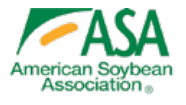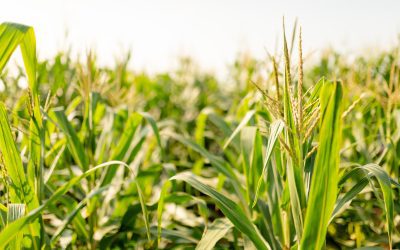

BY BLAIR SHIPP
ASA State Policy Communications Coordinator
To the average consumer, the winter months might appear to be a break for growers with harvest done and planting months away. However, those consumers never worked on behalf of agriculture policy.
ASA’s farmers leaders have had boots on the ground and faces on Zoom meetings this winter, especially after the
December 2022 drop of unfavorable policies from the U.S. Environmental Protection Agency (EPA) regarding the Renewable Fuel Standard (RFS) and “Waters of the U.S.”
The EPA dealt a blow to the U.S. biofuels industry late last year, when the agency released its draft “set” rule, which sets annual biofuel blending targets under the RFS. This announcement, including proposed Renewable Volume Obligations for 2023, 2024 and 2025, is disappointing for the biofuels industry and threatens the integrity of the RFS by significantly dialing back annual increases in volume obligations.
Following the news, the American Soybean Association (ASA) and its grower leaders hit the ground running to advocate for more favorable volume obligations under the RFS. In January, ASA, along with others in the biofuels industry, weighed in on EPA’s draft “set” rule.
ASA Directors Dave Walton (Iowa); Chris Hill (Minn.); Rob Shaffer (Ill.); Monte Peterson (N.D.); Josh Gackle (N.D.); Alan Meadows (Tenn.); Daryl Cates (Ill.); Steph Essick (Iowa); Dennis Fujan (Neb.); Charles Atkinson (Kan.); and
Jordan Scott (S.D.), along with ASA Chief Economist Scott Gerlt testified on the set rule during EPA’s virtual public hearing.
Soy growers said the new proposed rule will negatively impact producers by derailing the progress and growth made in biofuels investment. They said it also does not align with the administration’s previous commitment to mitigating climate change and lowering greenhouse gas emissions.
ASA appreciates the opportunity for public comment and will continue to urge EPA to re-evaluate its proposed Renewable Volume Obligations for 2023 and beyond before publishing a final rule. Through a consent decree submitted by EPA and Growth Energy, EPA must release the final set rule by June 14.
Waters of the U.S.
In late December, EPA and the Army Corps of Engineers announced their final definition of WOTUS, also called “Waters of the United States.” Agencies have stated they believe this rule will be “durable,” able to withstand legal challenges, and will be workable for both environmental and industry stakeholders.
This is the third major change to the WOTUS rule in less than eight years; and while ASA is still reviewing the 514-
page rule to determine exactly what it means for soybean growers, there are mounting concerns. Among the reasons soy growers are not pleased with this news:
- The agencies will use a confusing, two-part standard to identify which waters are WOTUS.
- Implementing use of these “significant nexus” standards will mean all waters and wetlands upstream of a project area are likely to be considered jurisdictional.
- The new rule will be more restrictive to land users and will likely restrict ag owners’ ability to sell to developers.
ASA President Daryl Cates, a farmer from Illinois, said the administration’s WOTUS rule “in no way provides the clear, nationwide regulatory certainty farmers and land managers have requested repeatedly.” Cates’ and other industry stakeholders’ comments were included in February news releases from the House Committee on Transportation & Infrastructure and the U.S. Senate Committee on Environment & Public Works, calling the rule “overburdensome” and “confusing.”
Cates expressed appreciation to lawmakers for pushing back on the latest rendition of WOTUS. “We need champions in Congress to continue pushing for reversal of these potentially damaging provisions,” he added.
WOTUS is set to go into effect March 20, but efforts to delay the rule are in motion. In addition to Congress challenging the rule, industry stakeholders have already begun lawsuits to stop implementation. Also, the U.S. Supreme Court will release an opinion on a WOTUS case (Sackett v. EPA) later this spring, for which ASA joined 13 other ag groups in submitting an amicus brief.
MAP & FMD Funding
A bipartisan group of lawmakers recently reintroduced the Expanding Agricultural Exports Act of 2023 to double USDA’s Market Access Program (MAP) and Foreign Market Development Program (FMD) funding.
Previously named the CREAATE and SMART acts, respectively, the legislation would increase MAP mandatory funding from $200 million to $400 million annually and would increase FMD mandatory funding from $34.5 million to $69 million annually.
MAP and FMD are vital to U.S. soybean farmers, as they provide opportunities to develop new markets and grow demand for U.S. products in foreign markets. Utilizing MAP and FMD funds, ASA — through WISHH and USSEC — has leveraged those dollars to increase market access, address technical barriers to entry and create on-the-ground capacity and demand for U.S. soy.
ASA, along with other members of the Coalition to Promote U.S. Agricultural Exports, applauded the following lawmakers in the Senate: Sen. Angus King (I-Maine); Sen. Joni Ernst (R-Iowa); Sen. Tina Smith (D-Minn.); Sn. Charles Grassley (R-Iowa); and Sen. Susan Collins (R-Maine). ASA also thanks several members of the U.S. House of Representatives, including, Rep. Dan Newhouse (R-Wash.); Rep. Jim Costa (D-Calif.); Rep. Tracey Mann (R-Kan.); Rep. Jimmy Panetta (D-Calif.); Rep. Ashley Hinson (R-Iowa); Rep. Kim Schrier (D-Wash.); Rep. Brad Finstad (R-Minn.); and Rep. Chellie Pingree (D-Maine) for re-introducing the bill.
According to a news release sent by the coalition, a May 2022 econometric study conducted by IHS Markit and ag economists at Texas A&M University predicted that doubling funding for these programs would generate an additional $44.4 billion in U.S. ag exports during the 2024-2029 time period.
This would directly benefit farmers, livestock producers, dairy operators and small businesses as they work to maintain and expand their global presence. Additionally, these programs generate a net return of $24.50 for every dollar spent and have contributed to the creation of 225,800 full- and part-time jobs across the U.S. economy.
The value of agricultural exports when adjusted for inflation has approximately doubled the past 30 years. While there are many reasons for this increase, research has shown part of it can be attributed to programs that help market U.S. agricultural goods to foreign buyers. MAP and FMD are two that have been important in expanding U.S. exports, but MAP funding hasn’t been increased since 2006, and FMD funding hasn’t been increased in two decades.
The Expanding Agricultural Exports Act must now be considered by the agriculture committees. ASA urges swift consideration and passage of this vital bill.



